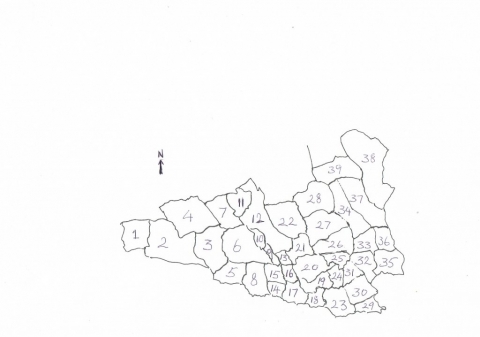Archaeological Sites in the Parish of Newmarket & Taur
Wednesday, April 11th, 2012As Recorded in the Archaeological Inventory of Co. Cork
Vol. IV – North Cork, Parts 1 & 2
TOWNLANDS
1. Glentanemacelligot. No recorded sites.
2. Glennamucklagh West. No recorded sites
3. Glennamucklagh East. 2 Fulachta Fiadh; Possible Ringfort; Standing Stone.
4. Taur More. Burial Ground; Cairn; 2 Enclosures; Fulacht Fiadh; Limekiln; Possible Ringfort.
5. Blueford. Burial Ground; 4 Fulachta Fiadh.
6. Glenlara. 6 Fulachta Fiadh; Possible Souterrain; Ringfort; 3 Standing Stones; Stone Row.
7. Inchantotane. Standing Stone.
8 Barnacurra. Circular Enclosure; 2 Fulachta Fiadh; 3 Standing Stones.
9. Gortnaglogh. 2 Fulachta Fiadh.
10. Tooreencormack. Fulacht Fiadh.
11. Tooreendermot. Fulacht Fiadh.
12. Commons South. 10 Fulachta Fiadh, Standing Stone.
13. Meenatarriff. 5 Fulachta Fiadh; One-storey Vernacular House; Possible Ringfort.
14. Ballyduane South. 2 Fulachta Fiadh; Limekiln; Possible Souterrain; Standing Stone.
15. Ballyduane West. Earthwork; Enclosure; 2 Fulachta Fiadh; Limekiln; Standing Stone.
16. Ballyduane East. Fulacht Fiadh.
17. Lisdangan. Burial Ground; 7 Fulachta Fiadh; Possible Church; Possible Fulacht Fiadh; Ringfort.
18. Castlemacauliffe. Castle (site of ); Fulacht Fiadh; Possible Ringfort.
19. Clonfert. Church; Fulacht Fiadh; Graveyard; Holy Well.
20. Curraduff 12 Fulachta Fiadh; Holy Well; 2 Limekilns; Curraduff/Newmarket Bridge.
21. Coolagh. Fulacht Fiadh; Ring-Barrow; Standing Stone.
22. Meens. Cairn; Circular Enclosure; 5 Fulachta Fiadh; Limekiln; Urn Burials.
23. Island. 4 Fulachta Fiadh; Limekiln; Possible Ringfort; Possible Souterrain; Ringfort.
24. Longacre. Rectangular Enclosure.
25. Newmarket. C. of I. Church; Circular Enclosure; Fulacht Fiadh; Historic Town; R.C. Church;
Newmarket/Curraduff Bridge.
26. Scarteen Lwr. Circular Enclosure; 5 Fulachta Fiadh; One-storey Vernacular House;
3 Standing Stones; Scarteen Lwr./Curraduff Bridge.
27. Scarteen Uppr. Burial Ground; 3 Fulachta Fiadh; Possible Church; Possible Fulacht Fiadh;
Possible Ringfort.
28. Knockduff Lwr. 4 Fulachta Fiadh.
29. Liscongill. 2 Fulachta Fiadh; Ringfort; Liscongill/Cloontycommade Bridge.
30. Park. No Recorded Sites.
31. Demesne. Castle (site of); Country House.
32. Garraunawarrig Uppr. Burial Ground; Possible Church.
33. Killowen. 2 Fulachta Fiadh; Holy Well; Possible Church; Ringfort.
34. Mountkeeffe. 7 Fulachta Fiadh.
35. Duarrigle. 2 Fulachta Fiadh; Standing Stone; Ringfort; Possible Souterraain.
36 Copsefield. Fulacht Fiadh.
37. Barleyhill. 5 Fulachta Fiadh
38. Gooseberryhill. 26 Fulachta Fiadh; Linear Earthwork; Mass Rock; Possible Souterrain; Ringfort; Rectangular Enclosure; Standing Stone.
39. Meeneeshal. 9 Fulachta Fiadh; Possible Ringfort; 2 Standing Stones.
Parts of Gooseberry hill (38) & Meeneeshal (39) are in the Parish of Meelin/Rockchapel.
Provided by Raymond O’Sullivan


